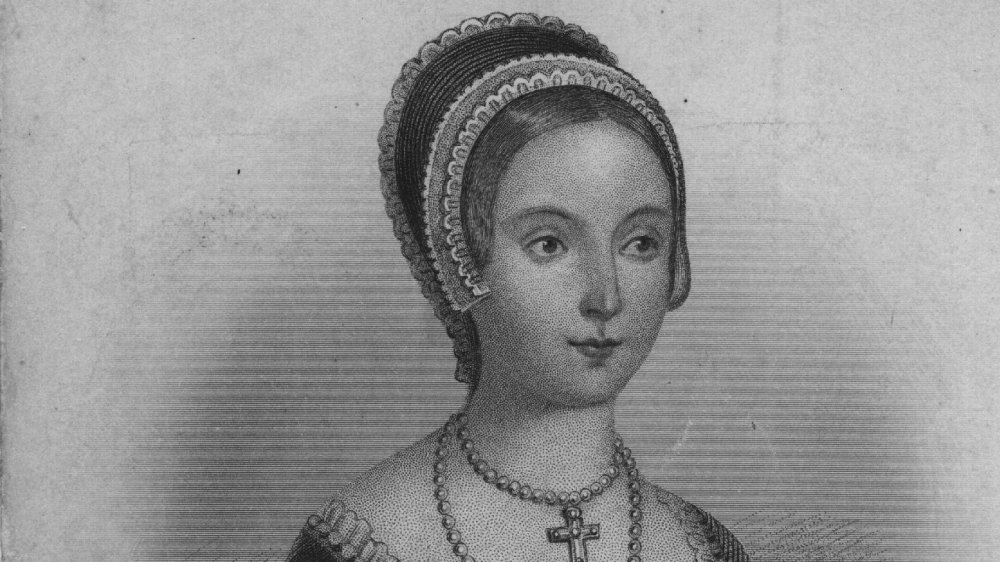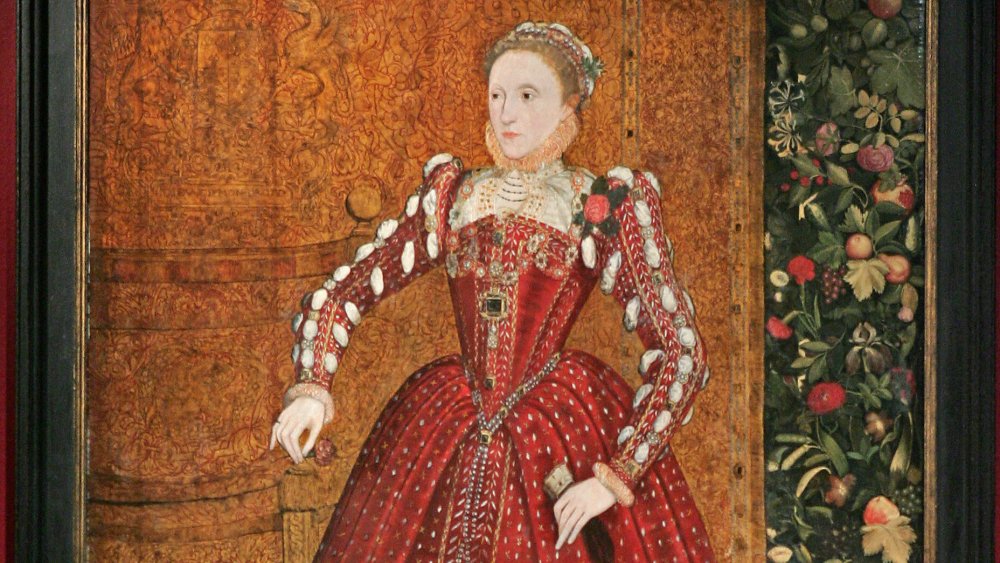The Real Reason Queen Elizabeth I Wore White Makeup
Fashion changes, otherwise it wouldn't be fashion. Clothing styles and makeup today change on a dime, for lots of reasons — instantaneous, wide-ranging marketing techniques, adept industry, and let's not forget money. It wasn't always so, of course. It isn't clear when people started caring about how they looked, rather than why — "Does this armor hide my muffin top?" doesn't show up a lot in the historical record. But care they do, and royalty, being just like the rest of us (except when they aren't), are no exception.
Take, for example, England's Elizabeth I, last of the Tudors, second-longest-reigning monarch of what William Shakespeare referred to as "this sceptered isle." She never married, often referring to her country as her spouse, though she came close a couple of times. She was a firm believer than a monarch needed to look the part, and so, for instance, as time went on she ordered her ladies-in-waiting to wear only black or white dresses, so that she, in all her rather impressive glory, would be the unquestioned center of attention at court. The BBC's History Extra relates that she once asked a visiting French nobleman what he thought of her ladies. His very wise reply: He was unable to "judge stars in the presence of the sun."
"Your Majesty is looking a bit peaked"
She had to look like a queen, and she felt at least part of her power came from her beauty. Portraits are deceiving, of course — people did still get executed for this, that, and the other thing, and an unattractive painting of a queen who had a headsman on speed dial was probably not in the artist's best interests. Still, numerous individuals reported on her personal attractiveness. That was compromised when Elizabeth was but 29 and contracted smallpox, a disease that created fever and pustules. The blisters would break and, if the victim was lucky enough to survive, often left significant scar tissue. Elizabeth was no exception.
As Australia's News.com.au tells us, much the way actors today might apply enough foundation makeup to spackle acne scars, Elizabeth tried to cover up the facial divots left by her smallpox bout. One of the problems was that the heavy white makeup she used, ceruse, was a combination of vinegar and white lead. The mixture was smeared on her face and across her cleavage and hands, often left in place for days at a time before removal. As we know now (but they didn't then) lead is poisonous. The foundation itself was incredibly drying, damaging and discoloring the underlying skin. She continued its use for the rest of her life, adding other cosmetics as well. According to the Royal Museums Greenwich, when she died, she had makeup an inch deep on her increasingly shrunken features.

